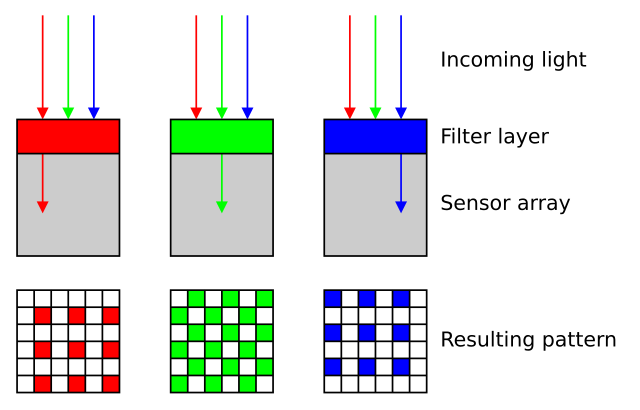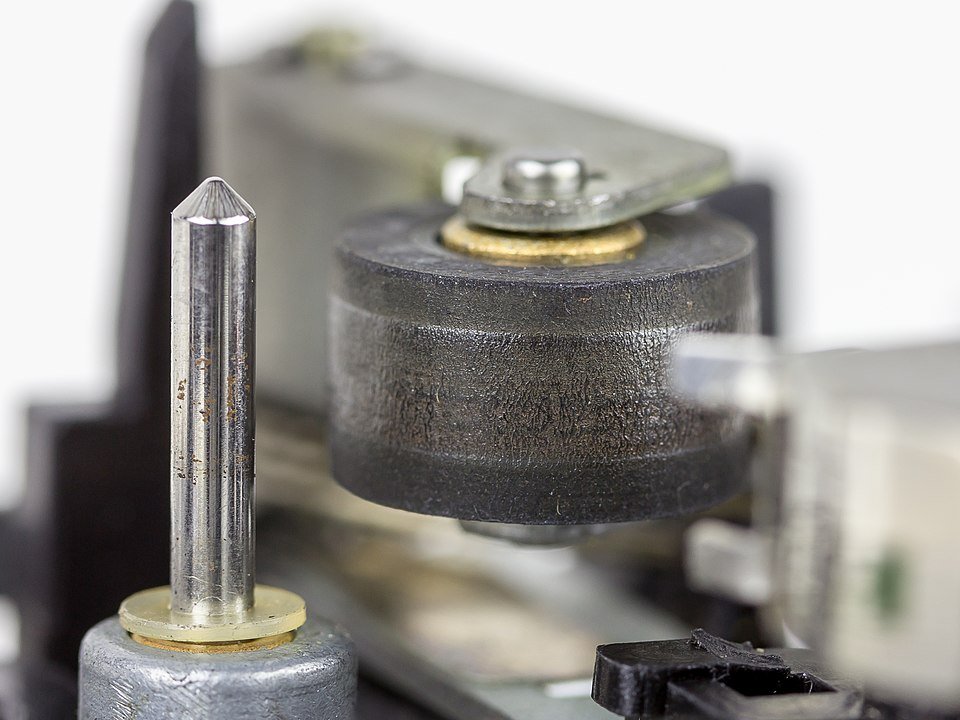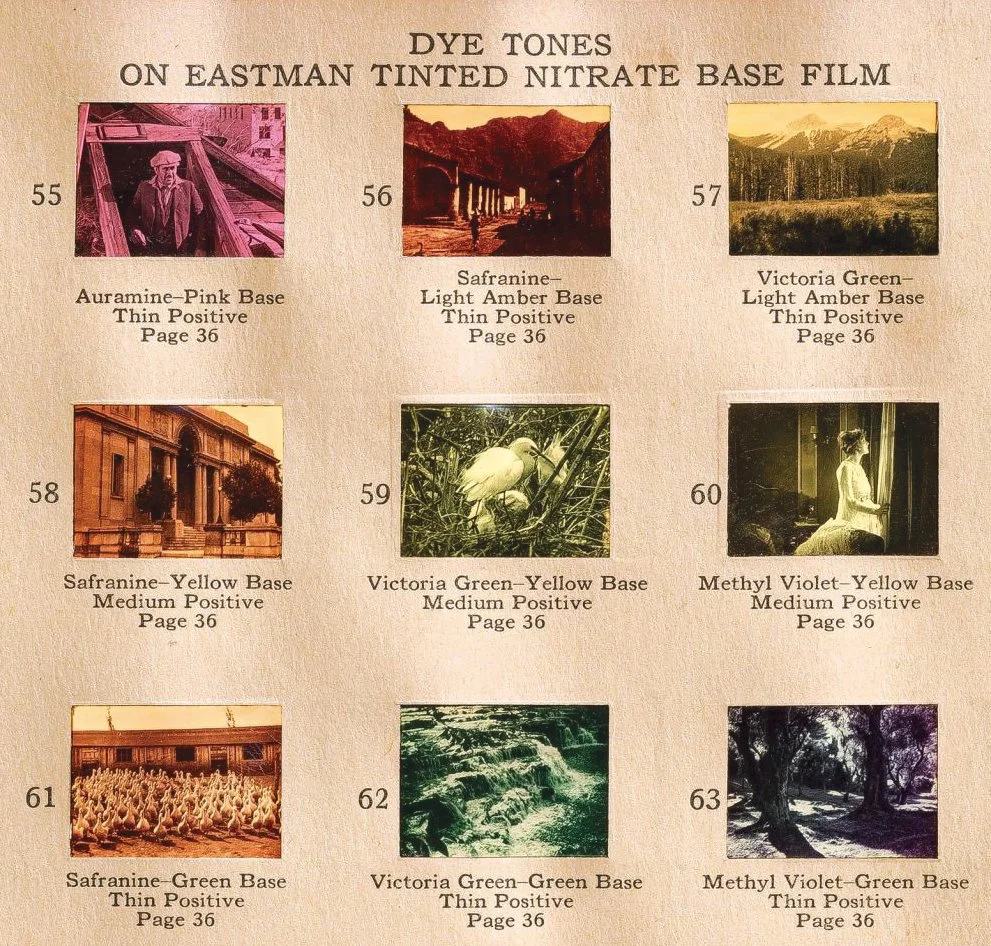Scanning archive film: An illustrated glossary
BAYER FILTER a color filter array for arranging RGB color filters on a square grid of photosensors
Schematic illustration of the R/G/B filtered pixel patterns on the digital sensor registering the respective color from the film emulsion layer. The three color patterns are then rendered into a full spectrum color picture. Source: Cburnett, CC BY-SA 3.0 <http://creativecommons.org/licenses/by-sa/3.0/>, via Wikimedia Commons
CAPSTAN a rotating spindle with some sort of rubber on the outside that transports the film through a → continuous film scanner
By © Raimond Spekking / CC BY-SA 4.0 (via Wikimedia Commons), CC BY-SA 4.0, https://commons.wikimedia.org/w/index.php?curid=57110631
CCD SENSOR “charge-coupled device”, based on metal-oxide semiconductors: up until 2010 primarily used type of sensor in digital image technology, then came the → CMOS sensor
CMOS SENSOR “active pixel sensor”, each sensor cell (“pixel”) has its own photodetector and own transistor. Common standard in modern digital image technology, as well as film scanners.
CMOS Image Sensor has photo diodes (PD), same as CCD Image Sensor. But there is difference in the mechanism of transmitting electrons. CMOS transmit electrons using the wire; CCD using CCD itself. The colored elements in the figure correspond the pixels; In color cameras, they are usually filtered red, blue and green.
Shape, GPL <http://www.gnu.org/licenses/gpl.html>, via Wikimedia Commons
COLLIMATED/ collimated light = “directed” light shining through film in a 90 degree angle
DIFFUSED LIGHT angle, brighter but more scratches visible diffused light = random distribution of light rays for even illumination across film plane, less scratches visible
An example of an optical collimating lens.
Rjcflyer, CC BY 3.0 <https://creativecommons.org/licenses/by/3.0>, via Wikimedia Commons
COLOR DEPTH/ the number of bits used to indicate the color of a single pixel
BIT DEPTH
CONTINUOUS FILM method of transportation in film scanners where the film is in
TRANSPORT constant motion while being photographed, as it runs over a line-array sensor → capstan
DENSITY absorbance of an optical material (darker = more dense, lighter = less dense)
DIGITAL INTERMEDIATE analog film production with digital post-production (DI-scanning), popular throughout the late 1990s and 2000s.
DYNAMIC RANGE the ratio between the lowest and the highest → densities a digital sensor can capture
INTERMITTENT method of transportation in film scanners where the frames are
FILM TRANSPORT recorded one-by-one in front of the sensor, without the frames being in motion, as opposed to → continuous film transport
LUMINANCE the amount of light emitted from a source
OVERSCAN a scan including more than the image area, most often perforation
QUANTIZATION the process of mapping incoming continuous analog film → densities to countable values ( → color depth) in digital image processing
RESOLUTION the smallest change that can be detected in the quantity that it is being measured, usually the numerical resolution of the digital output
SPECTRAL RESPONSE the way a photographic recorder (such as a digital sensor) reacts to → densities
TENDER also called procurement, open bidding process for certain goods or services - often by close-state institutions
TINTING/TONING tinting = soaking film in dye, toning = altering film colors through chemical processes → both bring problems in digitization because bandwidth of sensors only equipped to display “original” film colors
By Eastman Kodak - [1], Public Domain, https://commons.wikimedia.org/w/index.php?curid=150062325
WETGATE fluid in film gate used to conceal base scratches during scanning




